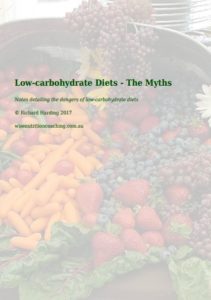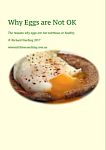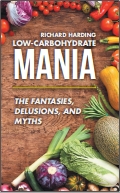What is the Problem with Wheat and Gluten?
Gluten-free foods is a huge industry. It is estimated that approximately 2% of the US population, that has not been diagnosed with celiac disease, is consuming a gluten-free diet. 1
The CSIRO reports that, “ as many as 1 in 10 Australian adults, or approximately 1.8 million people, were currently avoiding or limiting their consumption of wheat-based products. Women were more likely to be avoiding wheat than men. The survey also revealed that over half (53%) of those who were avoiding wheat were also avoiding dairy-based foods.” 2
However, this survey was based on voluntary registration and is not a true reflection of the dietary habits of Australia.
There are 3 major issues that people may have from consuming wheat and gluten.
- Celiac disease: This is an autoimmune disease to gluten that affect less than 1% of the population.
- Wheat allergy: This is an adverse immunological reaction to wheat proteins that is indicated by high IgE antibodies. Prevalence is generally considered to be less than celiac disease.
- Non-celiac gluten sensitivity (NCGS): This is everyone else that is affect by wheat. There is no specific test and many have a wide range of other food intolerances. Common confounding foods are dairy, eggs and FODMAP foods. Some people are also intolerant to the nightshade family (tomatoes, capsicums, egg plants, potatoes).
FODMAP is an acronym for Fermentable Oligo-, Di-, Mono-saccharides And Polyols. FODMAP items includes:
- Short chain polymers of fructose (fructans) and galactose (galacto-oligosaccharides) – raffinose, stachyose, inulin found in onion, garlic, beans, bananas, artichoke, wheat and rye.
- Lactose (milk sugar).
- Fructose – fruit sugar found in many fruit with high concentrations in apples, pears, pineapples, high-fructose corn syrup, honey and molasses.
- Sugar alcohols (polyols) such as sorbitol, mannitol, xylitol and maltitol. Found naturally in fruits and berries and is added to commercial foods as a sweetener.
A 2017 study reported that fructans was a more significant source of discomfort than gluten. Fructans and gluten are both found in wheat. Other sources of fructans are listed above. However, this involves removing healthy foods (many fruits, vegetables, beans, grains and mushrooms) whilst consuming detrimental items such as eggs, meat, poultry, fish and butter. 3 Eliminating FODMAP foods avoids the problem. It does not solve it.
There is a great deal of uncertainty in the prevalence of NCGS. The best estimates appear to be 2-3% of the American population.
Between 2004 and 2010, 5,896 patients were seen at the Center for Celiac Research, University of Maryland. The criteria for gluten sensitivity were noted for only 347 patients seen (6%). 4
Since the centre specialises in celiac disease, then the prevalence in the general population is going to be much less.
An Italian study involved a group of 920 patients diagnosed with irritable bowel syndrome (IBS). This is characterised by abdominal pain or discomfort for 12 weeks over the past year. There is no diagnostic test for this condition. 5
This group is much more likely to have food sensitivities, allergies or intolerances. The patients did have diagnostic test to show that they did not have CD or wheat allergy. They were subjected to a blinded food challenge. All of them went on a diet for four weeks that excluded wheat, cow’s milk, tomato, eggs, chocolate, and any other foods that the patients had found to exacerbate their symptoms.
After four weeks they were given capsules containing either gluten or a non-gluten placebo. All the patients had 2 weeks of placebo and 2 weeks of gluten, but nobody knew what order they were getting them in. They recorded their symptoms. It was found that 276 of the original 920 IBS patients (30%) had improvement in their symptoms on the elimination diet and a return of symptoms (pain, bloating, change in stool consistency) when taking the gluten capsule.
That is, only 30% of the patients suffering from irritable bowel syndrome were diagnosed to be sensitive to gluten.
Researchers then tested these 276 wheat-sensitive patients to discover if they were also sensitive to other foods. 75% of these patients that were sensitive to gluten were also sensitive to cow’s milk. These patients were also sensitive to eggs (120 cases – 43%) and tomatoes (112 cases – 41%). Fewer than 10% of those with IBS were sensitive to wheat only.
Popular commentators frequently misrepresent this finding to state that 30% of the general population are sensitive to wheat or gluten.An Australian trial consisting of 34 patients was performed over a six week period. 6 7
The trial was a double-blind placebo controlled study—the patients did not know if they were receiving gluten-free or gluten in the diet. The gluten foods were free of FODMAP components.
The primary outcome was the proportion of patients answering “NO” on more than 50% of the occasions to the question, “Were your symptoms adequately controlled?”
32% of the patients reported an improvement, even when they were unknowingly consuming a gluten diet. 40% of the patients reported no improvement, even when they were consuming a gluten-free diet.William Davis is largely responsible for the low-wheat, low-gluten diets with the publication of his book Wheat Belly. In this book he states that we live in a ‘whole grain world’. This simply is not true. 8
The US guidelines for whole grains is the equivalent of four slices of whole-grain bread for males and three slices for females. 99% of the US population do not meet these guidelines. Only 10% of grains consumed are whole grains. 9
Much of the processed grain consumed comes from yeast breads, grain-based desserts, pizza bases and Mexican mixed dishes.
When people give up gluten foods, they are also giving up the high-fat foods listed above, which is going to be of great benefit. When we hear stories people are feeling much better after eliminating gluten, they are also avoiding pizza (dairy, fat, and salt), highly-refined white bread which is spread with butter or margarine, cookies, cakes, desserts (fat, sugar, dairy) and pasta with its fat and cheese.
Many people who believe that they are eating a gluten-free diet are not. For celiac patients, even a very small amount of gluten (20 parts per million) can have serious consequences.
Davis claims that:
Davis claims that gluten is the problem, not wheat which means that all gluten grains are problematic. If so, then the variety of wheat it is irrelevant – traditional and modern wheat, rye, barley and possibly oats will cause problems.
Davis greatly exaggerates the extant of changes to wheat genetics since 1940s. 10
Whilst most discussion centres on gluten, wheat is relatively low on the list of foods likely to cause allergies. Below is a list of foods in order of prevalence of allergies. 11
- Cow’s milk
- Egg
- Shellfish
- Peanuts
- Fish
- Tree nuts
- Fruits
- Wheat
There is an increasing awareness of the importance of gut flora and its role in health. 12 13 14 15
People who embark on gluten-free diets frequently have significantly impaired health outcomes due to changes in gut bacteria.
Microbes in the intestines are essential for the breakdown of complex carbohydrates, the production of short chain fatty acids and synthesis of vitamins. More than 1000 different species have been identified. Despite the vast number of bacteria species and people, there are only two types of bacteriological ecosystems in the gut (enterotypes) – those dominated by Prevotella genus bacteria and those by Bacteroides genera. Both Bacteroides and Prevotella belong to Bacteroidetes phylum. Enterotypes were strongly associated with long-term diets, particularly protein and animal fat (Bacteroides) versus carbohydrates (Prevotella). Microbiome composition changed within 24 hours of initiating a high-fat/low-fiber or low-fat/high-fiber diet. However, it takes a longer period of time to change the enterotype from one state to the other. 16
A paper published in 2010, showed that healthy gut bacteria decreased and the numbers of unhealthy bacteria increased following the reductions in the intake of polysaccharides after following a gluten-free diet. 17
This paper also reports that nutritional deficiencies and health complications frequently occur compared with non-gluten-free diet subjects and this could be explained by changes to the gut bacteria. Inflammation markers were also significantly affected, for the worse.
Similar results were also obtained from a 2009 study. In addition to the changes to the intestinal bacteria which is noted in the previous study, this study showed that people on a gluten-free diet consume a less dietary fibre and polysaccharides which affect intestinal bacteria. The average amount of polysaccharides consumed was halved (from 117 g/d to 63 g/d) and dietary fibre from 20 g/d to 18 g/d. The recommended amount of fibre is set at a very conservative 25 g/day. 18
If it is essential to consume a gluten-free, grain-free diet then it must be done with awareness to avoid the very real dangers associated with such a diet.
Changing one aspect of our diet frequently results in multiple changes and it is difficult to know what changes are associated with the benefits.
As a generalisation, the best diets are whole-food, plant-based diets, which are not only optimal for our health are also the best for the environment and for the animals we share the earth with.
Related articles
What is the Problem with Wheat?
Wheat and Inflammation
Impact of a Gluten-Free Diet
Wheat and the Distorted Views of William Davis
Last updated on Tuesday 16 January 2024 at 05:00 by administrators
Footnotes
- Kim, H. et al. (2016) Time trends in the prevalence of celiac disease and gluten-free diet in the US population: results from the National Health and Nutrition Examination Surveys 2009-2014. JAMA Internal Medicine. 176 (11), 1716–1717.
- Golley, S. (2015) Understanding the choice to go gluten- or wheat-free – CSIRO blog [online]. Available from: https://blog.csiro.au/understanding-the-choice-to-go-gluten-or-wheat-free/ (Accessed 30 November 2017).
- Skodje, G. I. et al. (2017) Fructan, Rather Than Gluten, Induces Symptoms in Patients With Self-reported Non-celiac Gluten Sensitivity. Gastroenterology.
- Sapone, A. et al. (2012) Spectrum of gluten-related disorders: consensus on new nomenclature and classification. BMC Medicine. 10 (1), 1.
- Carroccio, A. et al. (2012) Non-Celiac Wheat Sensitivity Diagnosed by Double-Blind Placebo-Controlled Challenge: Exploring a New Clinical Entity. American Journal of Gastroenterology. 107 (12), 1898–1906.
- Biesiekierski, J. R. et al. (2011) Gluten Causes Gastrointestinal Symptoms in Subjects Without Celiac Disease: A Double-Blind Randomized Placebo-Controlled Trial. The American Journal Of Gastroenterology. 106508.
- Ferch, C. C. & Chey, W. D. (2012) Irritable bowel syndrome and gluten sensitivity without celiac disease: separating the wheat from the chaff. Gastroenterology. 142 (3), 664–666.
- Davis, W. (2011) Wheat Belly. Rodale Press, Inc.
- Krebs-Smith, S. M. et al. (2010) Americans Do Not Meet Federal Dietary Recommendations. Journal of Nutrition. 140 (10), 1832–1838.
- Stallknecht, G. F. et al. (1996) ‘Alternative Wheat Cereals as Food Grains: Einkorn, Emmer, Spelt, Kamut, and Triticale’, in J Janick (ed.) Progress in New Crops. Alexandria VA: ASHS Press. pp. 156–170.
- Campbell, Thomas. The China Study Solution: The Simple Way to Lose Weight and Reverse Illness, Using a Whole-Food, Plant-Based Diet (p. 84). Rodale Books.
- Brown, K. et al. (2012) Diet-Induced Dysbiosis of the Intestinal Microbiota and the Effects on Immunity and Disease. Nutrients. 4 (12), 1095–1119.
- Power, S. E. et al. (2014) Intestinal microbiota, diet and health. British Journal of Nutrition. 111 (03), 387–402.
- Tang, W. H. W. & Hazen, S. L. (2014) The contributory role of gut microbiota in cardiovascular disease. Journal of Clinical Investigation. 124 (10), 4204–4211.
- Wang, Z. et al. (2011) Gut flora metabolism of phosphatidylcholine promotes cardiovascular disease. Nature. 472 (7341), 57–63.
- Wu, G. D. et al. (2011) Linking long-term dietary patterns with gut microbial enterotypes. Science. 334 (6052), 105–108.
- Sanz, Y. (2010) Effects of a gluten-free diet on gut microbiota and immune function in healthy adult humans. Gut Microbes. 1 (3), 135–137.
- De Palma, G. et al. (2009) Effects of a gluten-free diet on gut microbiota and immune function in healthy adult human subjects. British Journal of Nutrition. 102 (08), 1154.





